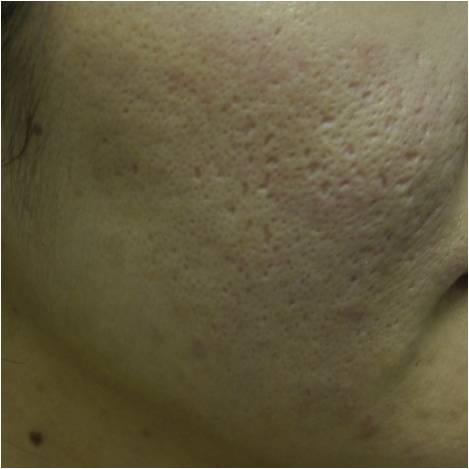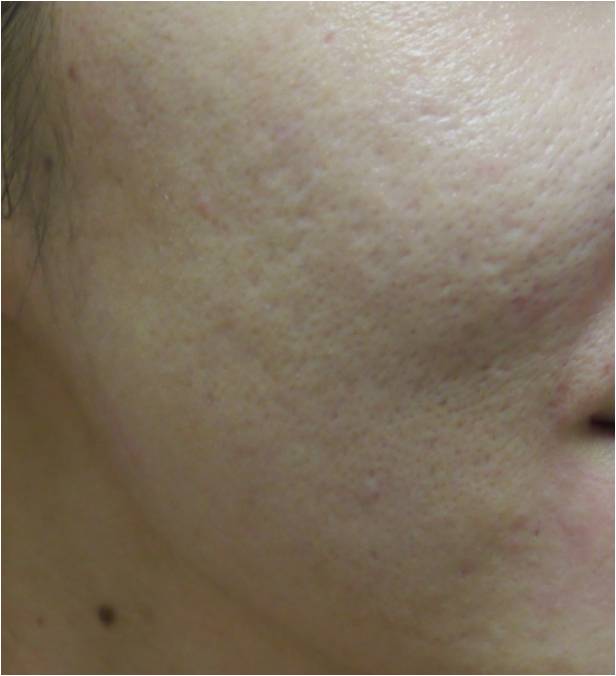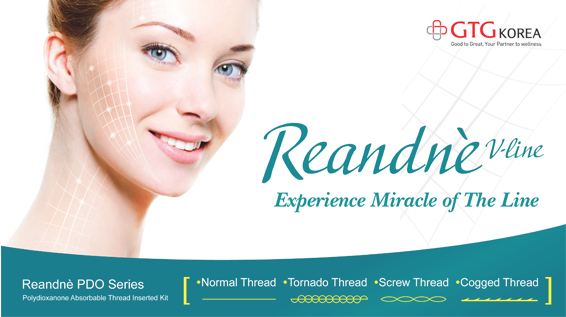Another similar study also by Dr. Woan-Ruoh Lee et al. used a single irradiation of a fractional CO2 laser (Lutronic eCO2®, San Jose, CA, USA), with the fluence of 2 or 4 mJ and densities of 100-400 spots/cm2.
They showed the laser enhanced flux of small-molecule drugs was 2 to 5-fold compared to intact nude mice skin. Fractional laser could selectively enhance drugs targeting to follicles such as imiquimod and fluorescein isothiocyanate-labeled dextran (FD) but not hydroquinone, which implies the importance of selecting adequate drugs for laser-assisted follicle delivery. They also proved the skin barrier function, determined by trans-epidermal water loss, completely recovered by 12 hour after irradiation.
In another study, Chien-Yu Hsiao et al. used fractional 10,600 nm CO2 laser (150XJ; Sharplan Laser Inc., Yokneam, Israel) treatment to create similar transdermal delivery of ascorbic acid 2-glucoside (AA2G). The AA2G permeation using four passes of fractional laser treatment (microthermal zones (MTZ): 150μm, 2% coverage, 5-9 W) was similar to that seen with conventional CO2 laser treatment of the same fluence.
They also found the absorption of L-ascorbic acid 2-phosphate sesquimagnesium salt (MAP-1) and magnesium L-ascorbic acid-2-phosphate (MAP-2) across fractional CO2 laser-treated (5 W) skin were 8 to 13-fold, and 20 to 22-fold higher, respectively, than the absorption of these compounds across intact nude mice skin. The permeation of MAP-1 and MAP-2 across fractional CO2 laser-treated (9 W) skin were 14 to 19-fold, and 30 to 42-fold higher, respectively, than their absorption across intact skin.
[Advertisement] Reandnè Thread Series – Manufacturer: GTG KOREA(www.gtgkorea.co.kr)
Their research revealed fractional CO2 laser treatment is an effective way of delivering vitamin C derivatives into the skin. Another similar study by the same group used the same fractional CO2 laser treatment to enhance skin permeation of tranexamic acid. The skin received 1 to 4 passes at fluencies from 5 to 11 W (MTZ: 150μm, 2% coverage). Four passes of fractional laser treatment caused less skin damage than conventional laser treatment at the same fluence. Fractional laser treatment provided at least 85% of the cumulative tranexamic acid permeation at the same fluence of conventional laser treatment. As fluence increased, the number of passes needed to achieve this goal decreased.
Wei-Yu Chen et al. studied on nude mice skin absorption characteristics of antibiotics, sunscreens, and macromolecules via ablative fractional laser-treated skin during post-operative periods. The skin received a single irradiation of a fractional CO2 laser (Lutronic eCO2®; Fremont, CA, USA), using fluences of 4 to 10 mJ with spot densities of 100–400 spots/cm2.
Their results showed the optimized drug (such as tetracycline hydrochloride or macromolecules) dose for skin treated with the fractional laser was 1/70–1/60 of the regular dose if drugs were applied immediately after laser treatment. However, the skin permeation of the chemical sunscreen, oxybenzone, was not altered by fractional laser treatment.


Figure2a and b: Before and after combined ablative (eCO2) and non-ablative (Fraxel) fractional lasers for depressed acne scar. (Courtesy of Dr. Shiou-Han Wang )
-To be continued





















